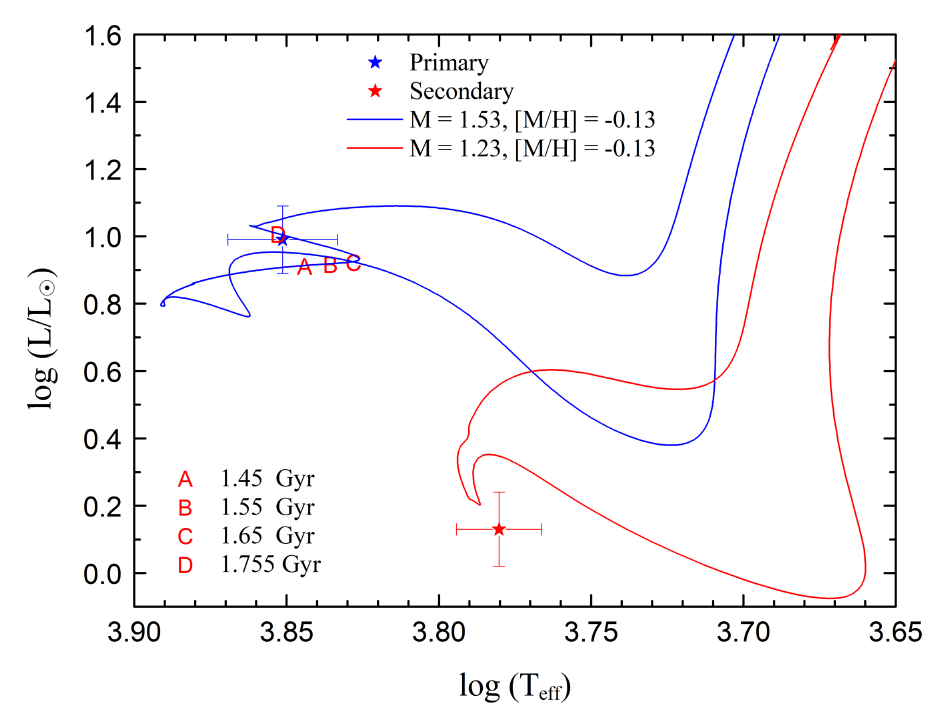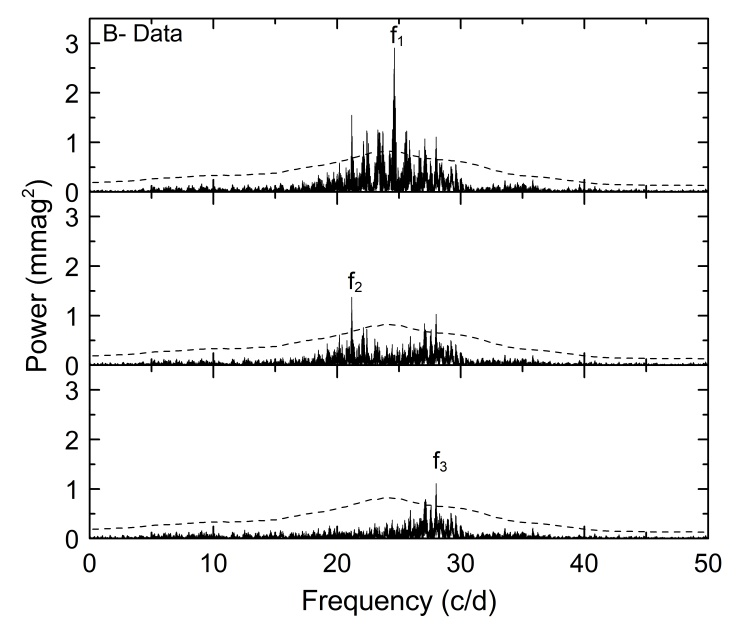We carried out new multi-color photometric and spectroscopic observations with five telescopes (NOWT, XL85cm, SPM84cm, YAO2.4m, NAO2.16m, and SPM2.12m) for eclipsing binary HIP 7666, respectively. The radial velocity curves are presented in Figure 1. The photometric solution and stellar physical parameters are derived in this work. The pulsation mode identifications of those frequencies of the primary component are performed using the asteroseismic models. The results of this work are published in the Monthly Notices of the Royal Astronomical Society (MNRAS, 2021, tmp, 1933F).
For eclipsing binaries (EBs), the physical parameters of the stars can be precisely determined based on photometric and spectroscopic observations data. As far as the EBs with pulsating component stars, stellar physical parameters will be helpful to build appropriate stellar models, which provides chances to pick out correct models by comparing the theoretical frequencies with the observation-determined ones, hence precisely derive the stellar parameters and identify the pulsation modes.
HIP 7666 is a detached binary system with an orbital period of 2.3722200(4) days, and the mass ratio of q = 0.803(4). The age of 1.7 Gyr is estimated from stellar evolutionary models as shown in Figure 2. This might suggest that the primary component has evolved to the late stages, while the secondary still locates at the early stages of the main sequence in H-R diagram. After subtracting the photometric solution from the light curves, three frequencies f1 = 24.631(4) c/d, f2 = 21.193(1) c/d, and f3 = 28.07(7) c/d are extracted as shown in Figure 3. The three frequencies have the regular large spacing by 3.44(4) c/d, which might be related to the eigenfrequencies. Comparisons between models and observations suggest that the primary component is most likely a p-mode non-radial δ Scuti oscillator, whose pulsation frequencies may be undergoing what is called “avoided crossing”.

Figure 1. The radial velocity curves of the primary and secondary of HIP

Figure 2. Stellar evolutionary models of the primary and secondary of HIP 7666 in H-R diagram.

Figure 3. Fourier power spectra of the light residuals for HIP 7666 in B band.
Article link:https://ui.adsabs.harvard.edu/abs/2021MNRAS.tmp.1933F/
Contact:FENG Guojie
Xinjiang Astronomical Observatory, Chinese Academy of Sciences
Email: fengguojie@xao.ac.cn